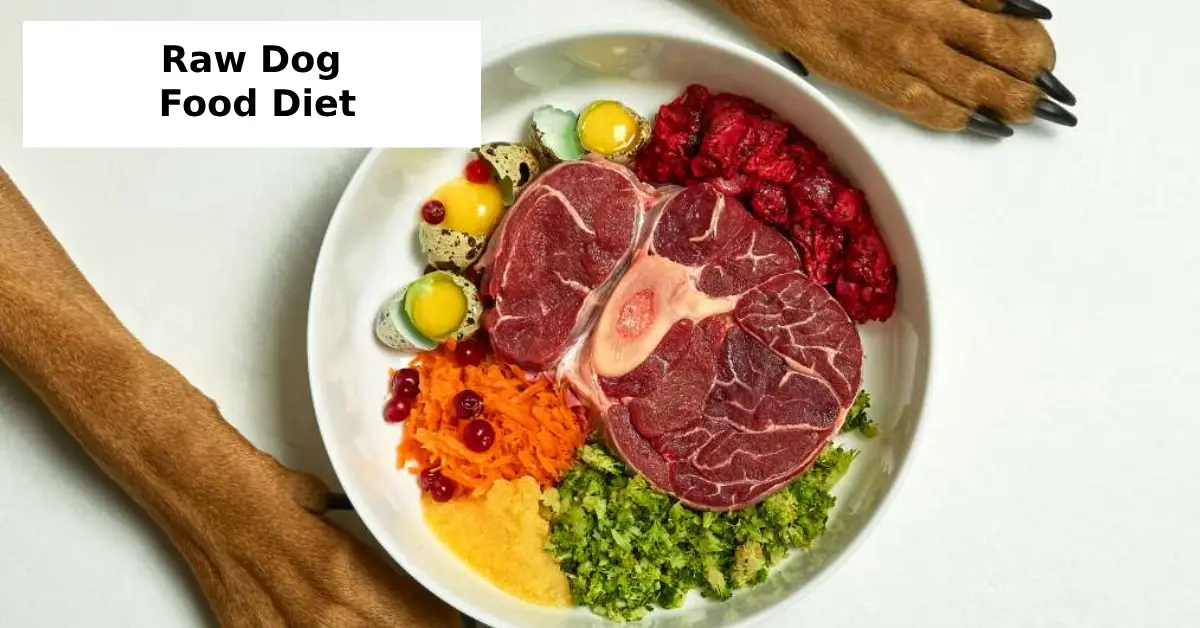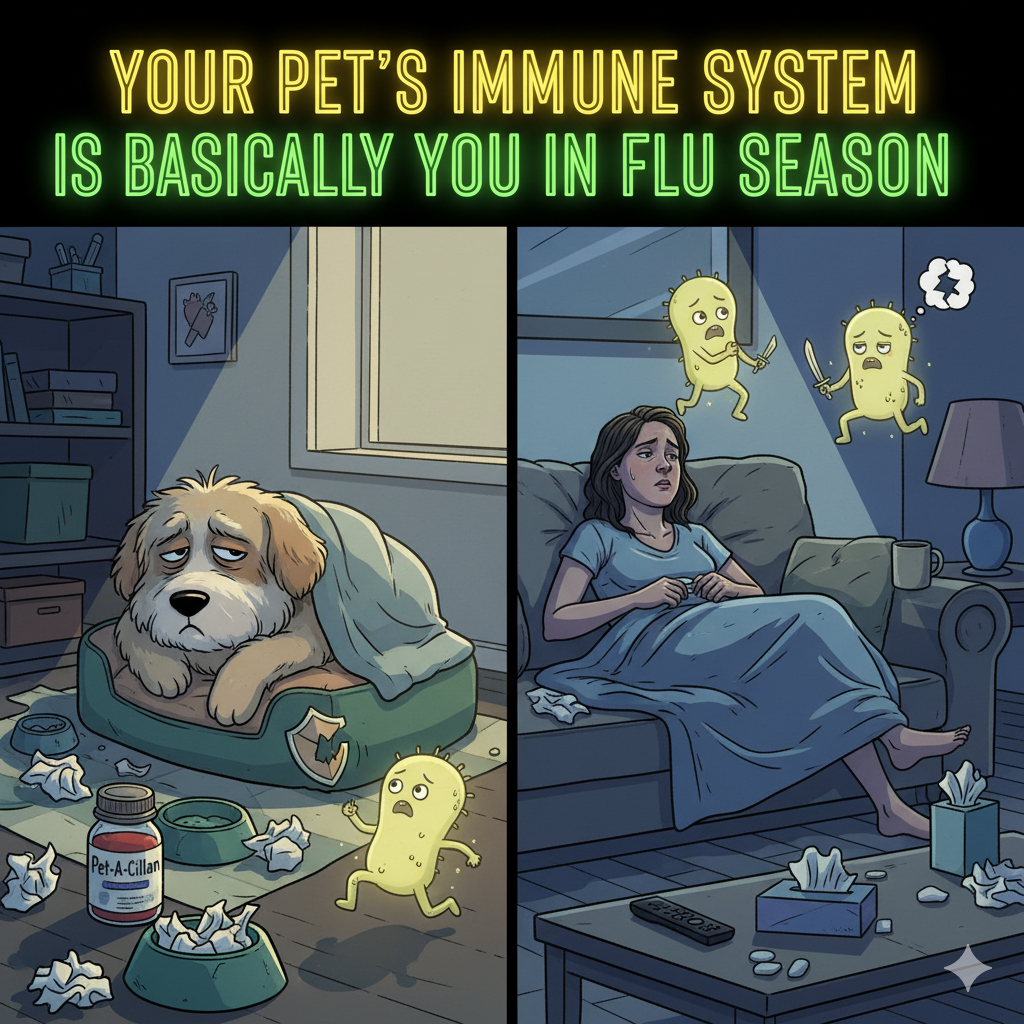For health-conscious pet parents and dog owners in the U.S. concerned about commercial pet food, the idea of feeding raw has gained traction. A raw dog food diet—also known as the BARF diet for dogs (Biologically Appropriate Raw Food)—aims to replicate what dogs’ ancestors ate in the wild. But what exactly are the raw dog food diet benefits, and is it the right choice for your furry friend?
This comprehensive guide will dive into the pros and cons of raw food diet for dogs, safety concerns, and practical tips for transitioning to raw dog food, backed by insights from veterinarians and pet nutritionists.
What is a Raw Dog Food Diet?
A raw dog food diet typically includes raw meat, bones, fruits, vegetables, and organ meats. It avoids commercial kibble, artificial additives, and overly processed grains. Popular among pet bloggers and dog wellness influencers, this natural approach to feeding aims to provide a balanced raw diet for dogs that is closer to what canines would naturally consume.
The core elements often include:
- Raw muscle meat (beef, chicken, turkey, lamb)
- Edible bones
- Organ meats (liver, kidney, heart)
- Fresh fruits and vegetables
- Supplements (like fish oil or kelp) if needed
1. Improved Digestion and Stool Quality
One of the most reported raw dog food diet benefits is improved digestion. Raw diets are easier on your dog’s stomach because they contain fewer fillers and unnecessary carbohydrates. Dog owners often notice firmer, smaller, and less smelly stools within days of switching.
Health-conscious pet parents appreciate that raw diets tend to have fewer artificial preservatives and allergens, promoting better gut health.
2. Better Coat Condition and Healthier Skin
If your dog suffers from dull fur or itchy skin, a raw diet might be the solution. The inclusion of omega-3 fatty acids from raw meat and fish can drastically improve skin and coat condition. Owners of dogs with allergies or food sensitivities often see a noticeable difference after switching to raw.
This is why many veterinarians and pet nutritionists recommend exploring raw dog food for allergies in such cases.
3. Higher Energy and Lean Muscle Mass
Dogs fed on a raw food diet are often more energetic, alert, and active. The high protein content helps build lean muscle and sustain energy throughout the day. This makes raw feeding ideal for dog trainers promoting high-protein diets and active breeds.
4. Enhanced Immune Function
Raw diets are rich in naturally occurring enzymes, antioxidants, and nutrients that support a dog’s immune system. These components are often diminished in high-temperature processed kibble.
A stronger immune system may help your dog resist infections, allergies, and even chronic health issues—making raw feeding especially appealing for puppy owners exploring diet options or dogs recovering from illness.
5. Cleaner Teeth and Fresher Breath
Another amazing raw dog food diet benefit is dental health. Chewing on raw bones helps scrape off plaque and tartar naturally. Dogs on raw diets tend to have whiter teeth and noticeably better breath.
Rescue organizations or foster pet parents have reported improvements in dental health when switching neglected or shelter dogs to a raw feeding plan.
6. Weight Management and Obesity Prevention
Processed dog food often contains high levels of carbs and sugars that can lead to obesity. A balanced raw diet for dogs helps maintain a healthy weight naturally. It’s calorie-dense yet nutrient-rich, keeping your dog full and satisfied without overfeeding.
This is particularly useful for consumers of premium or organic pet food products who want natural alternatives to weight control formulas.
Raw Food Diet for Dogs Pros and Cons
While the benefits are vast, it’s important to weigh the raw food diet for dogs pros and cons:
Pros:
- Improved digestion
- Better coat and skin
- More energy
- Dental health
- Stronger immunity
Cons:
- Time-consuming preparation
- Risk of bacterial contamination if not handled properly
- Nutritional imbalance if not planned correctly
- May not be suitable for immune-compromised dogs
Always consult with a vet before switching diets, especially for senior dogs or puppies. Learn more about homemade dog treat recipes to support your dog’s raw journey safely.
Best Raw Dog Food Brands in the USA
If you’re not ready to prepare meals at home, many best raw dog food brands in the USA offer veterinarian-approved, pre-packaged raw options. Some top choices include:
- Instinct Raw
- Stella & Chewy’s
- Darwin’s Natural Pet Products
- Primal Pet Foods
These brands offer veterinarian approved raw dog food that’s frozen or freeze-dried, providing convenience without sacrificing quality.
Homemade Raw Dog Food Recipes
For DIY feeders, homemade raw dog food recipes offer flexibility and transparency. A simple recipe includes:
- 50% raw meaty bones (like chicken necks or turkey wings)
- 30% muscle meat
- 10% organ meats
- 10% fruits and veggies (like carrots, spinach, blueberries)
Always ensure your recipe meets nutritional standards to avoid deficiencies. This is where veterinarians and pet nutritionists play a crucial role in guiding pet parents.
Is Raw Dog Food Safe for Puppies?
Puppies can thrive on raw diets if it’s introduced correctly. However, is raw dog food safe for puppies? Yes—but it must be balanced, properly portioned, and approved by a vet. Puppies have specific nutritional needs during growth stages.
Puppy owners exploring diet options should consult with a vet before introducing raw meals to ensure bone content and nutrients are suitable for development.
Transitioning to Raw Dog Food: Tips for Success
Transitioning to raw dog food should be gradual. Start by mixing small portions of raw food with the existing kibble over 7–10 days. Monitor your dog for digestive issues, changes in appetite, or allergies.
Steps:
- Introduce 25% raw + 75% kibble for 2–3 days
- Increase to 50/50 for the next few days
- Then 75% raw until fully transitioned
This slow process is essential to avoid digestive upset, especially in dogs with a history of sensitivity.
Raw Dog Food Benefits and Risks
While many are excited about the raw dog food benefits and risks, it’s crucial to stay informed. Risks may include:
- Improper nutrient balance
- Potential pathogen exposure
- Bone hazards if bones aren’t raw and soft
However, when handled properly, raw diets can be extremely safe and effective. Following expert-backed recipes or using best raw dog food brands USA helps mitigate these risks.
Final Thoughts on Raw Dog Food Diet Benefits
The raw dog food diet benefits are hard to ignore: improved digestion, coat, immunity, energy, and overall well-being. For people searching for natural or holistic dog diets, raw feeding offers a powerful, natural alternative to processed pet food.
Yet, it’s not a one-size-fits-all approach. Every dog is different, and consulting with veterinarians and pet nutritionists is critical to ensure your dog thrives on this diet.
Whether you’re feeding store-bought raw meals or exploring homemade raw dog food recipes, make sure your pup’s diet is balanced, safe, and tailored to their unique needs.






1 thought on “What Are the Health Benefits of a Raw Dog Food Diet?”